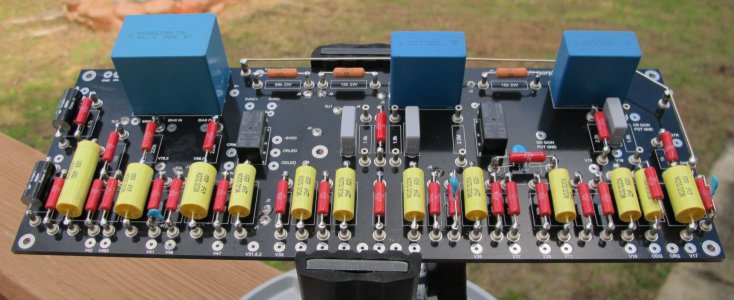- Joined
- Oct 20, 2014
- Messages
- 495
Usually tube shields are mu-metal, and work by absorbing stray EM and converting it to heat like a shorted turn in a transformer. Aluminum should work, though I've never seen or heard of one made from aluminum. I'm interested to see how well it works! I knew an old timer, maybe 25 years ago, who made his own tube shields from large transformer EI lamintations. He'd cut the middle out of an E section, and run it through a sheet metal roller to make a tube, and solder it closed. He used piano wire to make spring clips to hold the shield down tight to the socket. The clips held onto the top of the shield, and went into holes in the chassis.
Dangit man, I got enough projects going on. You're making me wonder about building that 6AS7/6080 headphone amp I've been putting off for too long. :thinking::lmao: ondering:
ondering:
Dangit man, I got enough projects going on. You're making me wonder about building that 6AS7/6080 headphone amp I've been putting off for too long. :thinking::lmao:


